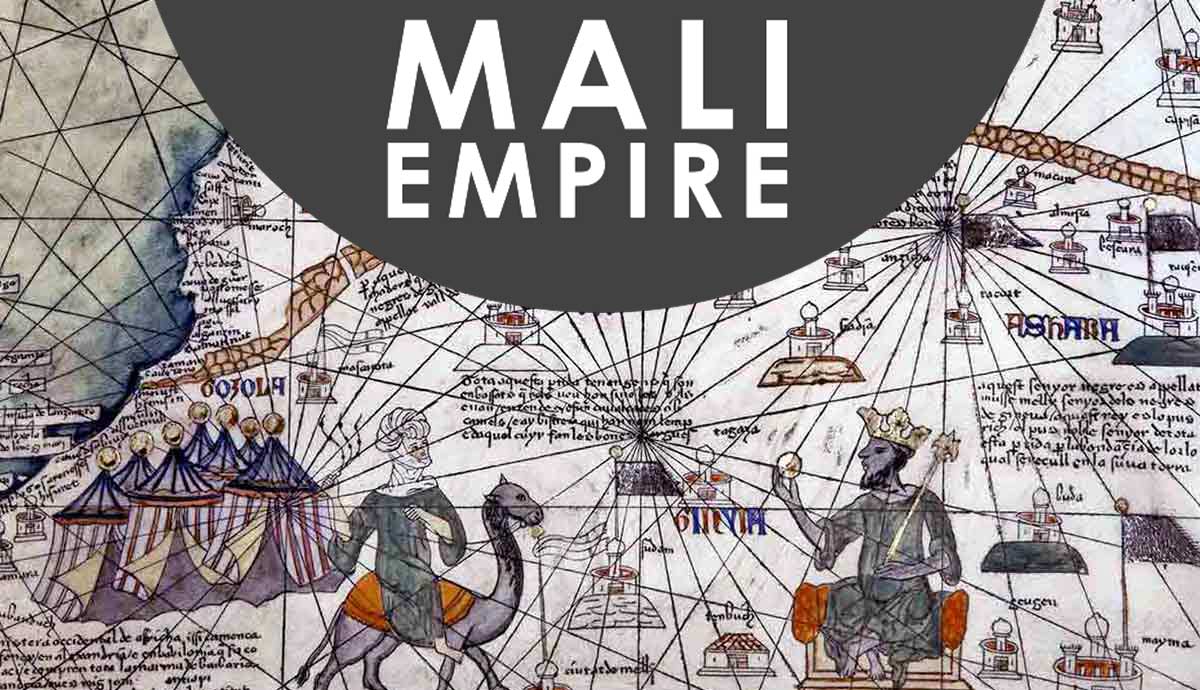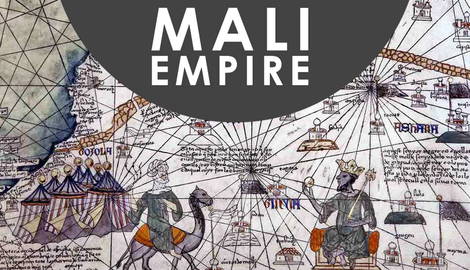
From its humble beginnings as a small Mandinka kingdom on the upper banks of the Niger River to the sprawling empire that grew in the following centuries, the Mali Empire was a juggernaut of power. Enriched by extensive trade networks and a powerful army, it expanded to conquer vast tracts of land and achieve new heights of wealth as gold poured into the nation. In fact, it produced the wealthiest man in history, Mansa Musa.
The Empire of Mali shaped and reshaped West Africa for centuries, leaving an important legacy for what was to follow.
The Rise of the Mali Empire

In 1965, a Polish and Guinean archeological team in the town of Niani discovered the remains of what would turn out to be the remnants of a vast urban site that had been occupied since the 6th century CE. The vast industrial complexes that were uncovered provided proof for the oral claims and sketchy written sources describing a huge empire that had existed in the region many centuries before.
The discovery proved that a complex state had existed long before the Mali Empire was said to have begun. It is now clear that the Mali Empire was, in fact, the evolutionary result of a merging of many various states in the region, either by conquest or diplomacy.
The Mali Empire, however, was not the first huge empire in the region. That honor goes to the Ghana Empire, which existed for several centuries before its eventual decline in the 11th and 12 centuries. Following the decline of the Ghana Empire, the Manding region in the savannah to the south would play host to the rise of a Mandinka kingdom in the upper reaches of the Niger River.
During this time, trade routes shifted south, facilitating the growth and success of the regions from which the Mali Empire would arise. Exact dates are missing, and the oral traditions are ambiguous about the earliest period of the Mali Empire. However, written accounts and oral traditionalists started to agree with each other on the details around the early 13th century. The Empire is believed to have been established around 1230 under the rule of Sundiata Keita.
Sundiata was from the Keita clan of the Malinke people, who hailed from the tiny kingdom of Kangaba about 50 miles southwest of present-day Bamako on the northern bank of the Niger River.

According to traditional tales, Sundiata was one of 12 sons who were heirs to the throne of Kangaba. The small kingdom, however, was conquered by Sumanguru, the king of the neighboring state of Kaniaga. All of Sundiata’s brothers were killed, but Sundiata was spared because he was sickly and appeared close to death anyway. According to the legend, Sundiata was so sickly that he could not walk until he was seven years old.
Sundiata, however, did not die. He grew up to become the chief of a village. He raised a small army and gained the support of his tribe before challenging the might of Sumanguru. Around 1235, Sundiata defeated Sumanguru at the Battle of Kirina. As a result, Kaniaga came under Sundiata’s control, and the Empire of Mali began to realize its imperial ambition. Soon afterward, Sundiata went to war with what remained of the much-depleted Ghana Empire. He captured and razed the Ghanaian capital of Kumbi, effectively putting an end to the Ghana Empire. After this victory, Sundiata led no more military campaigns, but his generals managed to expand the burgeoning Empire’s borders in all directions.
In 1240, Sundiata moved the capital from Jeriba to Niani, which stood at the confluence of the Niger and Sankarani Rivers. The move to this geographical position was instrumental in facilitating a huge amount of trade which would quickly fill the coffers of the Mali Empire.
Sundiata was Muslim but was not zealous in spreading the religion throughout his Empire. Much of his power was derived from the good relations he had with the tribal chiefs in his empire, and so he allowed them to retain their traditional beliefs, thus fostering a sense of tolerance.
Imperial Mali

Much of what we know about the history of the Mali Empire comes from the Tunisian historian Ibn Khaldun (1332–1406), who documented the succession of power in the empire. According to his writings, Sundiata Keita died around 1255, and in his wake, there was a brief interregnum caused by disagreements between the Great Council and the hunter guilds. Eventually, one of Sundiata Keita’s sons, Wali, took power. Ibn Khaldun wrote highly of Wali and mentioned that he went on hajj – the pilgrimage to Mecca.
Nothing is known of the succession of Wali’s brother, Wati, nor is there anything known about Wati’s rule other than he was succeeded by his brother Khalifa.
Khalifa was characterized as a person who took perverse pleasure in violence. He regularly used his subjects as target practice, frequently shooting them with arrows. Eventually, his behavior would result in him being overthrown and killed. Abu Bakr was to succeed him. A grandson of Sundiata Keita through one of Sundiata’s daughters, Abu Bakr was the only ruler descended from the female line. His rule, however, was short. A court official and possibly formerly enslaved, Sakura, seized power and became the new Mansa (ruler). Under his reign, the turmoil that had started with the interregnum and lasted through the quick succession of Mansas finally came to an end, and Sakura was able to stabilize the Empire.

Through Sakura’s rule, the borders expanded, and trade with North Africa increased. Sakura went on hajj but was murdered on his return journey in the early 1300s. Wali’s son, Qu, succeeded him, shifting the lineage back to the Keita line. Qu was succeeded by his son, Muhammad, who launched two voyages of discovery in the Atlantic Ocean. After the first voyage failed to return, he decided to lead the second voyage himself. This voyage, too, failed to return, and the man he left in charge of the empire, Kanku Musa, a grandson of Sundiata’s brother, became Mansa Musa I of the Mali Empire in around 1312.
Mansa Musa would become the most well-known of all the Malian rulers, mainly as a result of his immense wealth. Like his predecessors, Mansa Musa was Muslim but did not force his religion on the empire. Under his guidance, Timbuktu was peacefully incorporated into the Malian Empire, and the city became an important center of education with the creation of Sankore University.

The Malian Empire under Mansa Musa flourished, and as the empire’s wealth increased, so did the wealth of its ruler. By today’s standards, it is estimated that Mansa Musa’s wealth would translate into more than $400 billion, possibly making him the richest man in history. In 1324, he went on hajj with an entourage of thousands of followers. Wherever he went, he disposed of vast amounts of wealth, buying goods and giving to charity. According to legend, he spent so much money that the value of gold in Egypt and Arabia collapsed and took 12 years to recover.

Mansa Musa died in 1337. One of his greatest legacies lived on in the University of Sankore in Timbuktu, which had grown to accommodate 25,000 students. It also housed Africa’s (and possibly the world’s) largest library at the time, containing over one million manuscripts.
Mansa Musa’s rule was followed by that of his son, Maghan Keita I, who spent wastefully, exhausting the coffers of the Mali Empire. After his death in 1341, he was succeeded by Suleiman Keita, who attempted to put the empire back into good financial shape. Because of his austere approach to spending, he became unpopular with the Malian people, who had grown used to lavish spending.
The queen attempted to depose him, but the plot was uncovered, and she was imprisoned. During this reign, however, the Dyolof province broke away from the empire and declared its independence.
The Decline of the Mali Empire

After the death of Suleiman Keita in 1360, he was succeeded by his son, Camba Keita, who ruled for only nine months before being deposed by Mari Djata Keita II, who drove the empire into bankruptcy with his spending. After his death in 1374, his brother, Mansa Musa Keita II, attempted to reverse his brother’s bad governance. In 1375, the Songhai Kingdom broke away from Malian control, and the Mali Empire lost another piece of land. The Songhai would later grow significantly in power and eventually eclipse the Mali Empire. In the meantime, however, the Mali Empire would suffer a string of inadequate rulers.
In 1375, the Catalan cartographer Abraham Cresques created an atlas with a map of West Africa that featured a depiction of Mansa Musa. This spurred much European interest, and many Europeans traveled to the Empire of Mali in search of riches.
With increasing pressure from raids and rebellions, in 1434, Timbuktu was lost to the Tuaregs, and three years later, the city of Oualata was taken as well. Throughout the rest of the 15th century, Mali lost much territory to the Songhai.
As a much-reduced state and having been eclipsed by the Songhai, Mali regained some power after reasserting dominance over the Wolof territories, but the slow decline could not be stopped. On April 26, 1599, the Moroccans completely defeated the Malians at the Battle of Jenné. Eight years earlier, the Moroccans had also decisively defeated the Empire of Songhai, ending that African state’s imperial ambitions too.
In 1610, Mahmud Keita IV, the last mansa, died. Oral tradition states that his three sons fought over what remained, but the time of the Empire of Mali was over.

The Empire of Mali succeeded the Ghana Empire and preceded the Songhai Empire in the succession of immensely powerful states in West Africa during the medieval era. With a long history spanning several centuries, the legends and myths surrounding the empire passed through oral tradition, thus shaping the identities of the region’s people.
The Mali Empire was a multi-ethnic and multi-linguistic empire that was hugely influential at its time. It was a dominant feature throughout West and North Africa, even gaining a powerful reputation in the Middle East and beyond. It also helped spread Islam throughout the region without resorting to religious conquest. In the story of Africa, the Mali Empire remains an extremely important chapter.









